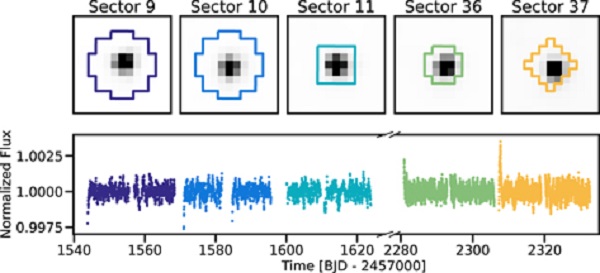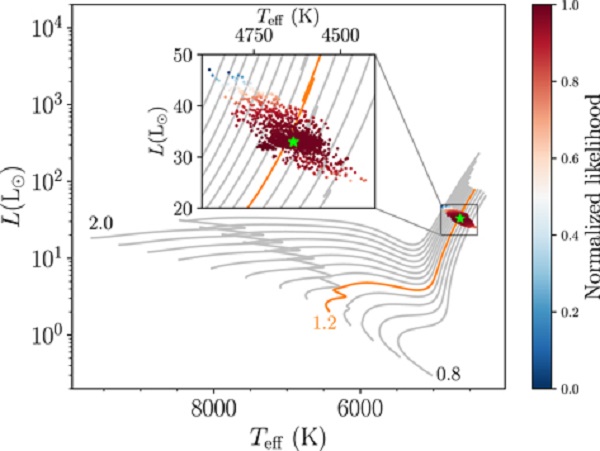On March 2, the Astrophysical Journal published new results about the exoplanet system HD 76920 led by WU Tao, who is working in the Stellar Astrophysics Group of Yunnan Observatories, Chinese Academy of Sciences (CAS), and JIANG Chen, who is working at the Max Planck Institute for Solar System Research. In this journal article, the authors present a detailed asteroseismic analysis of the host star HD 76920 and update the improved planet system’s fundamental properties that are so far the most precise ones.
Since 1995, with the seminal discovery of the first exoplanet around a solar-like star (51 Pegasi), searching for planets beyond our solar system has become one of the fastest-growing fields in astronomy. The status of exoplanetary search has undergone revolutionary changes during the past two decades, thanks to high-quality, spaceborne photometry missions such as the retired CoRoT and Kepler, and the ongoing TESS space mission. Asteroseismology, the study of stars by the interpretation of their oscillations, has proven to be an exquisite tool for stellar physics, galactic astrophysics, as well as exoplanetary science. One of the noticeable breakthroughs for asteroseismology is its synergy with exoplanetary science.
HD 76920b has an orbital eccentricity of 0.856 (comparable to the eccentric solar system bodies Comet 2P/Encke and asteroid 3200 Phaethon), making it one of the most eccentric planets known to orbit evolved stars. Solar-like oscillations in HD 76920 are detected for the first time, using five sectors of the TESS light curve that cover around 140 days of data. By utilizing asteroseismic modeling performed by five individual international teams, the authors determine the improved measurements of the stellar mass, radius and age, and update the semimajor axis and mass of the planet. With these updated properties of the planetary system, the authors confirm that the planet is currently far away enough from the star to experience negligible tidal decay until being engulfed in the stellar envelope. And they predict this event will occur within about 100 Myr, depending on the stellar model used.
Asteroseismology is most known for its ability to characterize stellar fundamental parameters (e.g., mass, radius, density) to a high level of precision which is a crucial factor in constraining the properties of planets. This work of asteroseismic analysis emphasizes the potential of stellar oscillations for characterizing exoplanet systems through the synergy between exoplanet research and asteroseismology.
The project leading to this publication has received funding from the B-type Strategic Priority Program of CAS, the National Key Research and Development Program of China, the National Natural Science Foundation of China, the Youth Innovation Promotion Association of CAS, and from Yunnan Revitalization Talent Support Program (young Talent Project).

Figure 1. Observatons from TESS. Best-fit apertures (top) overlaid on the TESS target pixel files (TPFs) extracted per each sector, and light curve (bottom) extracted using these apertures.

Figure 2. Evolutionary tracks and models for HD 76920, indicating that the star is loacted near the RGB luminosity bump.
Contact:
WU Tao
Yunnan Observatories, CAS
Email: wutao@ynao.ac.cn